Reflection of light
1/37
There's no tags or description
Looks like no tags are added yet.
Name | Mastery | Learn | Test | Matching | Spaced |
|---|
No study sessions yet.
38 Terms
reflection
when light travelling in a medium encounters a boundary leading to a second medium, part of the incident light is returned to the first medium which it came
mirror
properties
how are they made
purpose/what do they do
any smooth surface can act as a mirror
can be plane or curved
made by depositing a thin film of aluminium on a polished surface
can be coated on back or front depending on type/purpose
redirect light rays and forms an image of objects
2 types of reflection (at plane surfaces)
1- regular/specular reflection
2- diffuse reflection
regular/specular reflection
when a parallel pencil of rays is incident on a highly polished surface in a single (THE SAME) direction
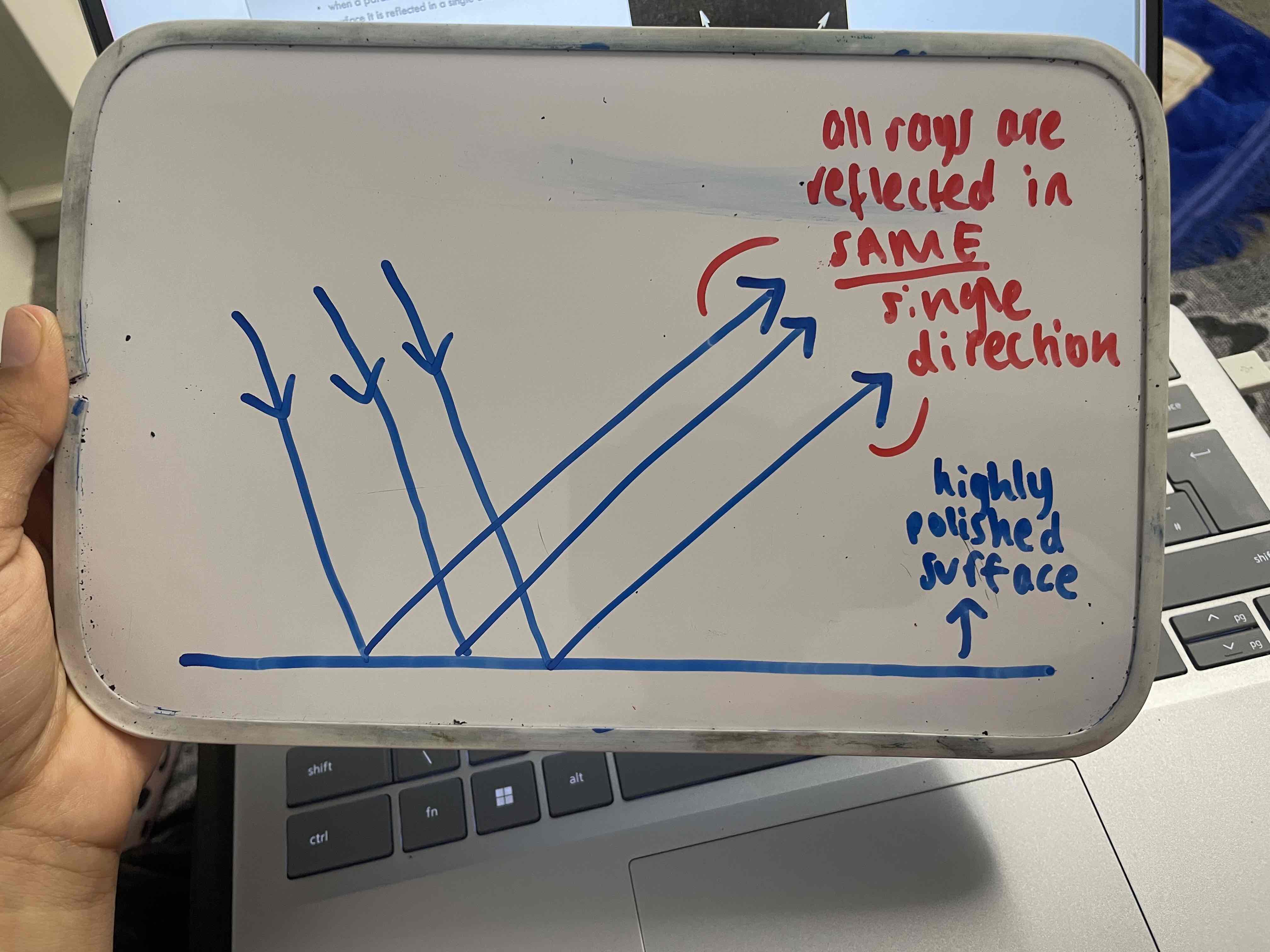
diffuse reflection
when a parallel pencil of rays is incident on an irregular or rough surface (eg - a non glossy white paper) it is reflected or scattered in all directions
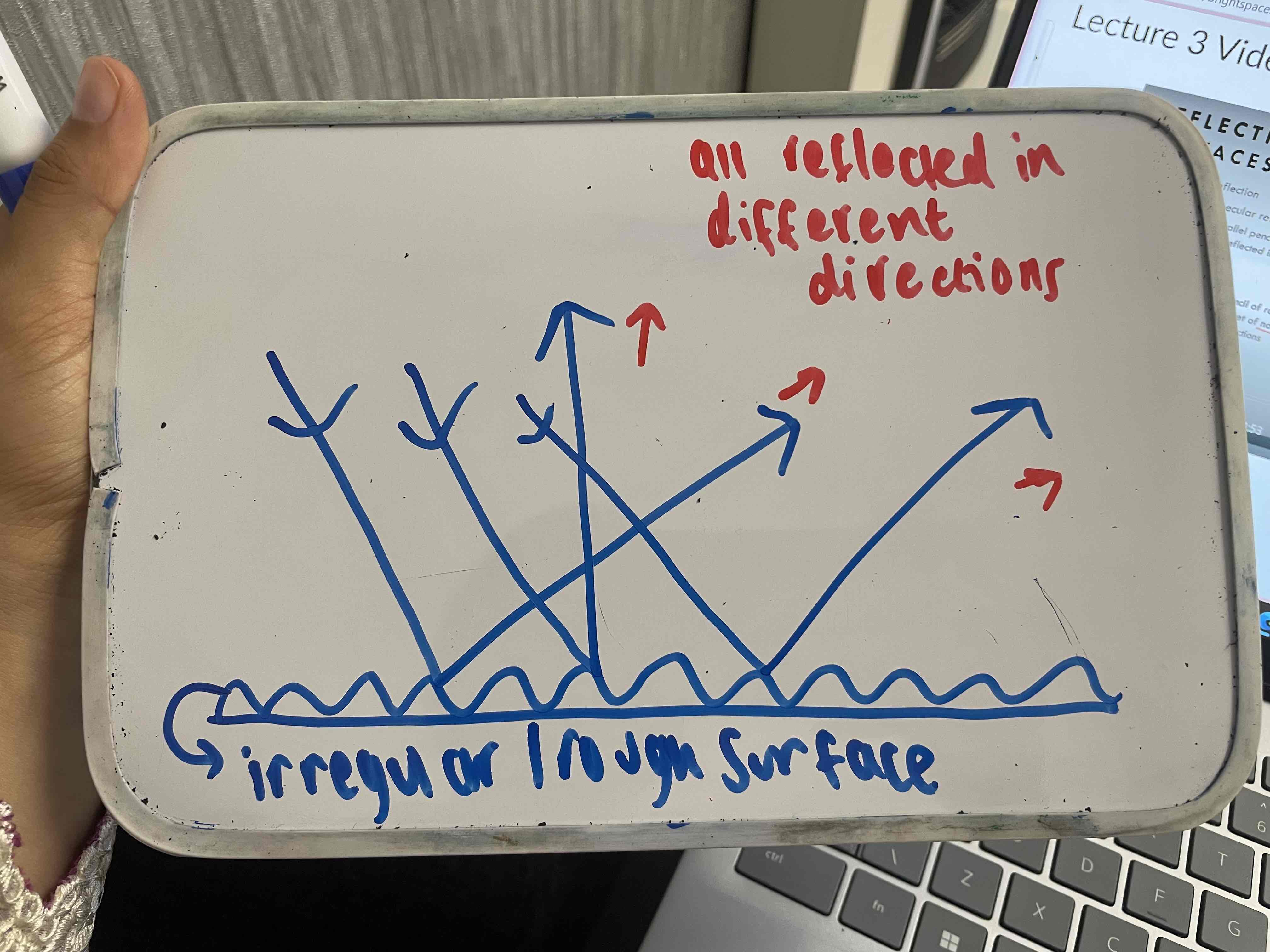
how is diffuse reflection used in real life/day to day scenarios
helps us to detect objects in everyday experiences, for example when driving at night the road is made easily visible by diffuse reflection of the car head light beams from the irregular road surface
incident ray
the ray that is hitting/going towards the mirror surface
reflected ray
the ray that is reflected from the mirror surface
point of incidence
the point at which the incident ray hits the mirror surface and then gets regularly reflected along the path BC (reflected ray)
normal
line which is perpendicular to the reflecting surface at the point of incidence
what is i
the angle of incidence - angle between the incident ray and the normal
what is i’
angle of reflection - angle between the normal and reflected ray
what is the first law of reflection
the incident ray, reflected ray and the normal lie in one plane which is perpendicular to the (mirror surface
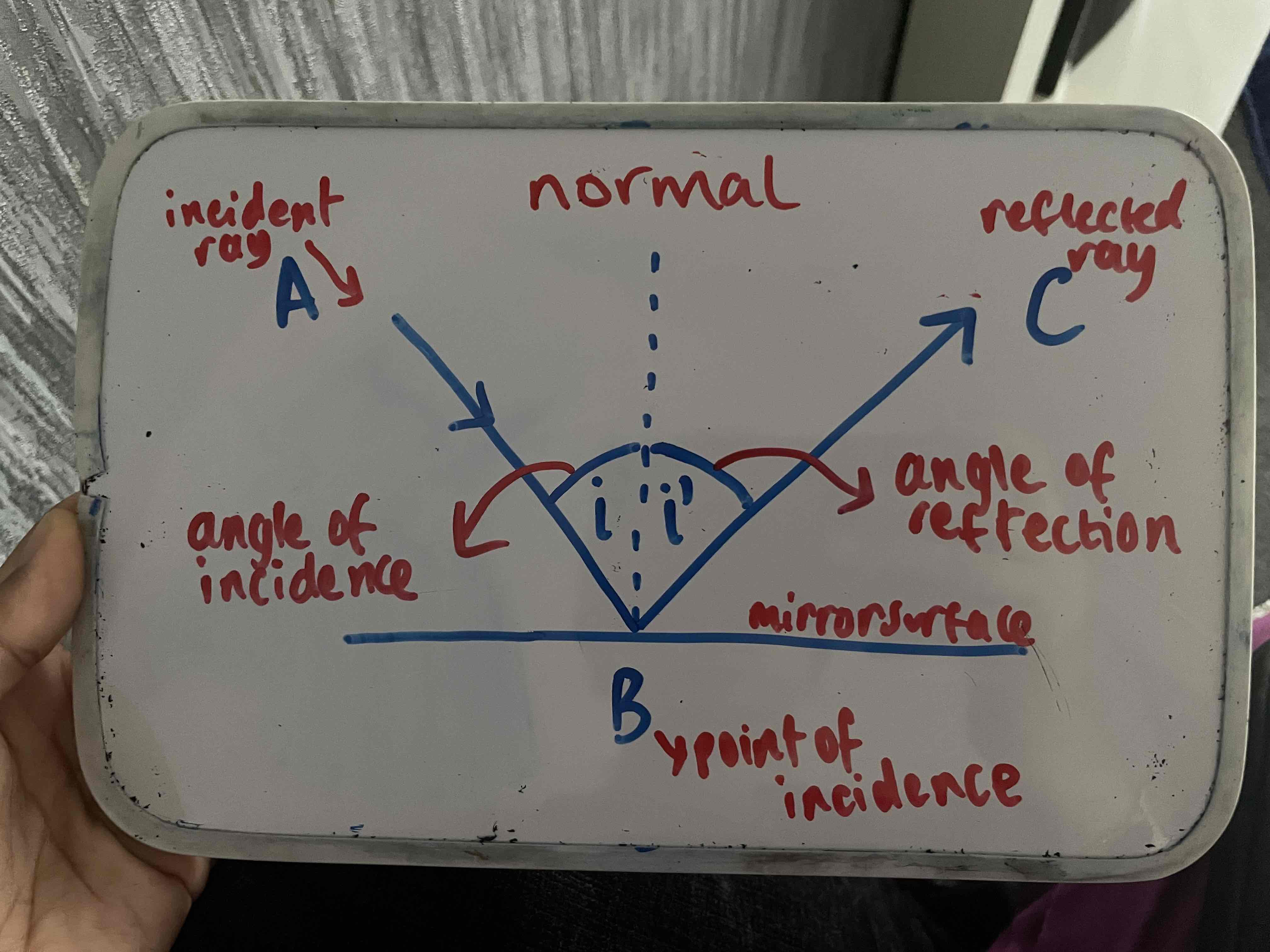
what is the second law of reflection
the angle of incidence (i) is equal to the angle of reflection (i’)
i = i’
this law can be proved by applying Huygen’s principle
The formation of an image by a plane mirror
S - point source of light placed in front of a plane mirror
three rays of light leaving S and are incident on the mirror at points A, B and C
the ray SA is reflected back along the direction AS
rays at B and C will travel along the reflected directions BD and CE
SA and DB extended backwards to the point S’ where they meet
At B, <SBN = i and <NBD = i’
SAS’ is parallel to BN so <ASB = i - due to alternate angles
<AS’B = i’ - due to corresponding angles
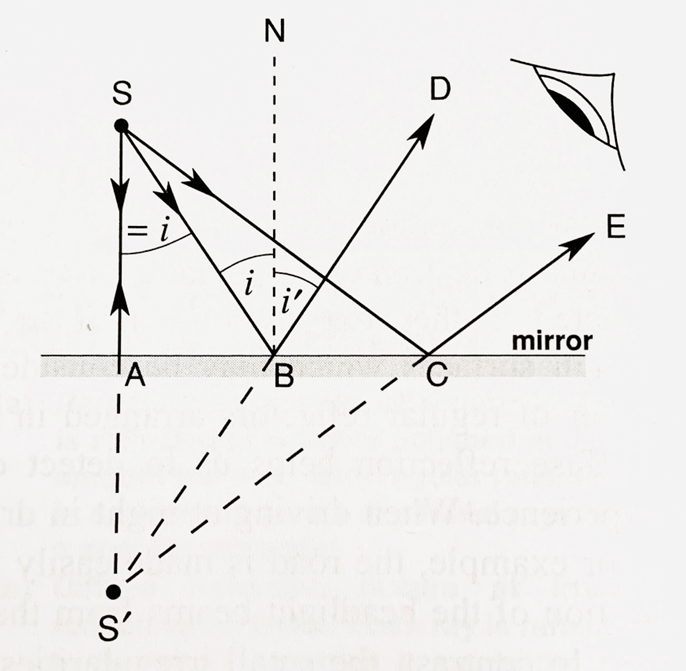
congruent triangles
have the exact same three sides and three angles
triangles SAB and S’AB:
<SAB and S’AB are = both 90 degrees
<AS’B and ASB are = as i = i’ / the angle of incidence and refraction are equal
the side AB is common for both
so SA = S’A eg if SA is 1m the image will also be formed at 1m
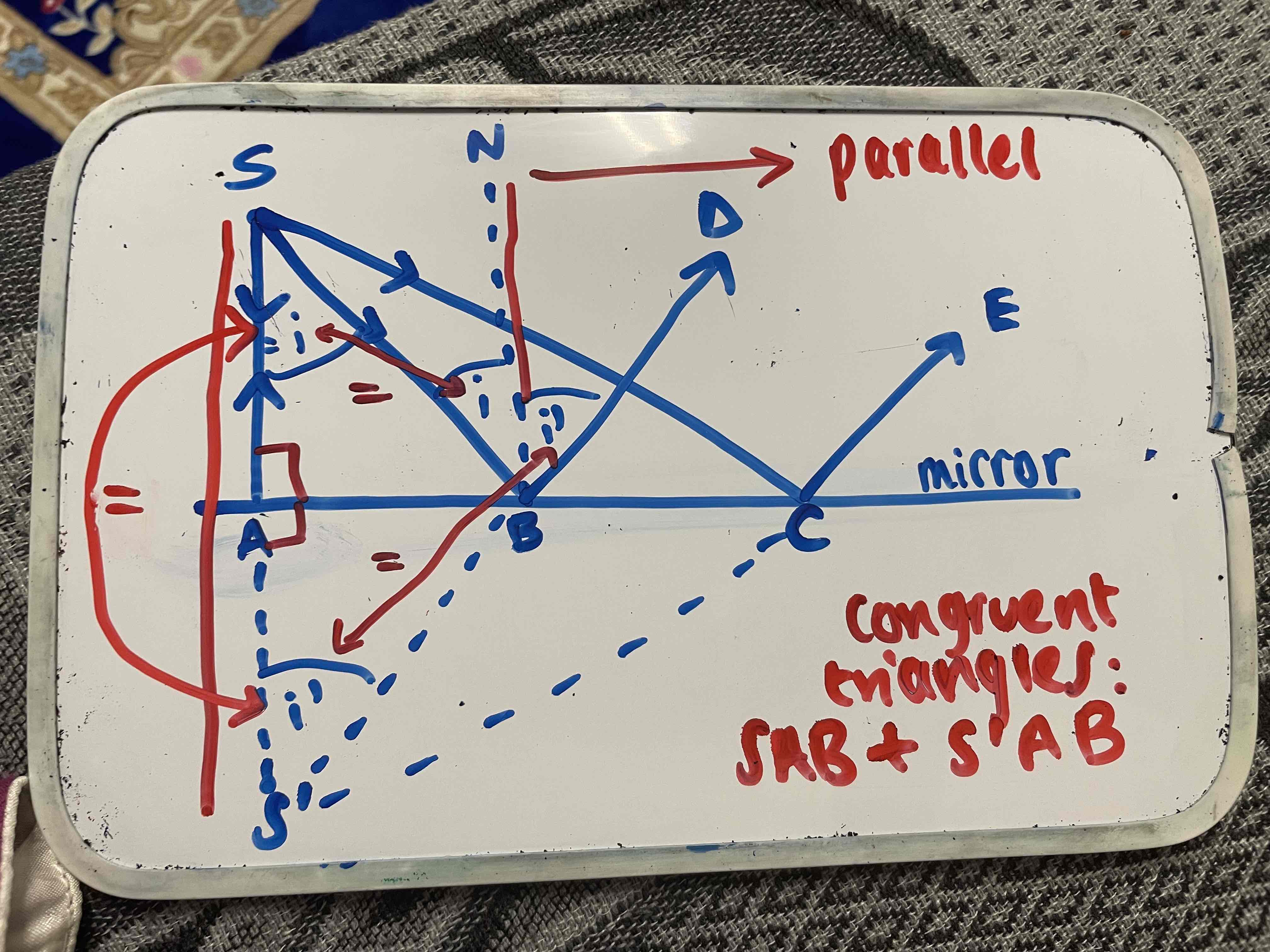
explain how the rays diverge from S’
ray CE appears to be diverging from S’
when viewed from in front of a mirror all the reflected rays appear to diverge from the point S’
what is S’
virtual image of S
conclusion of SA and S’A
SA = S’A
for a plane mirror the image distance behind the mirror is the same as the object distance in front of the mirror
characteristics of the image formed by a plane mirror
position, size, nature and appearance
position
the image is as far behind the mirror as the object is in front
the distance between the object and the mirror is the same as the distance between the mirror and the image, = distances
size
the image is the same size as the object
nature
image is virtual / real (depending)
appearance
we can say an image is upright, laterally inverted left to right)
eg if a child holds up their left hand in front of a mirror it looks like they are holding their right hand so is inverted
what is a sight testing chart/visual acuity chart
chart used by optometrists to check vision and usually involves the use of a plane mirror
why are plane mirrors involved/needed in the use of visual acuity charts
charts need to be placed at 6m from the patient
however most testing rooms are smaller/less than this so use plane mirrors
the chart is placed just above the patient and a mirror is placed at 3m from the patient, so the patient will view a virtual image of the chart via the mirror kept at 3m
as the distance from the mirror to the object and the mirror to the image is the same this is a total of 6m enabling the right distance from patient to chart
IMP: letters on the chart need to be printed in reverse so it appears correct way for the patient
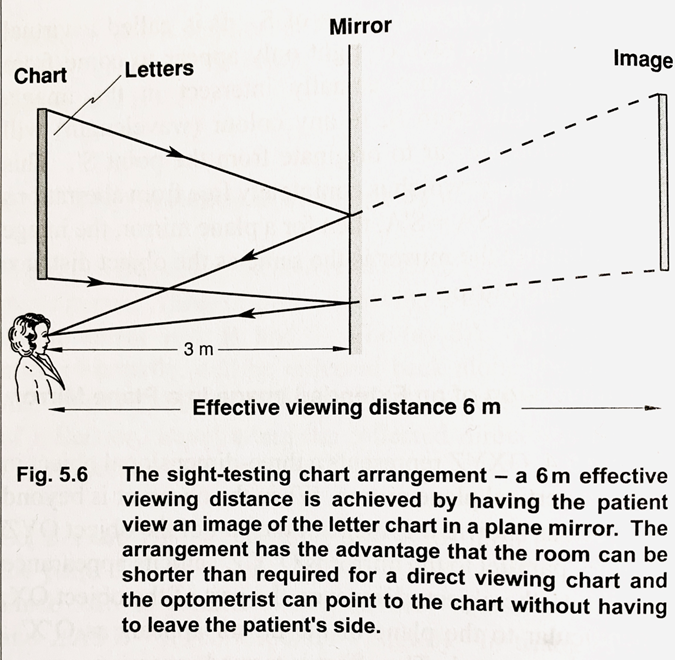
two types of curved mirrors
concave and convex mirrors
represented by DAE
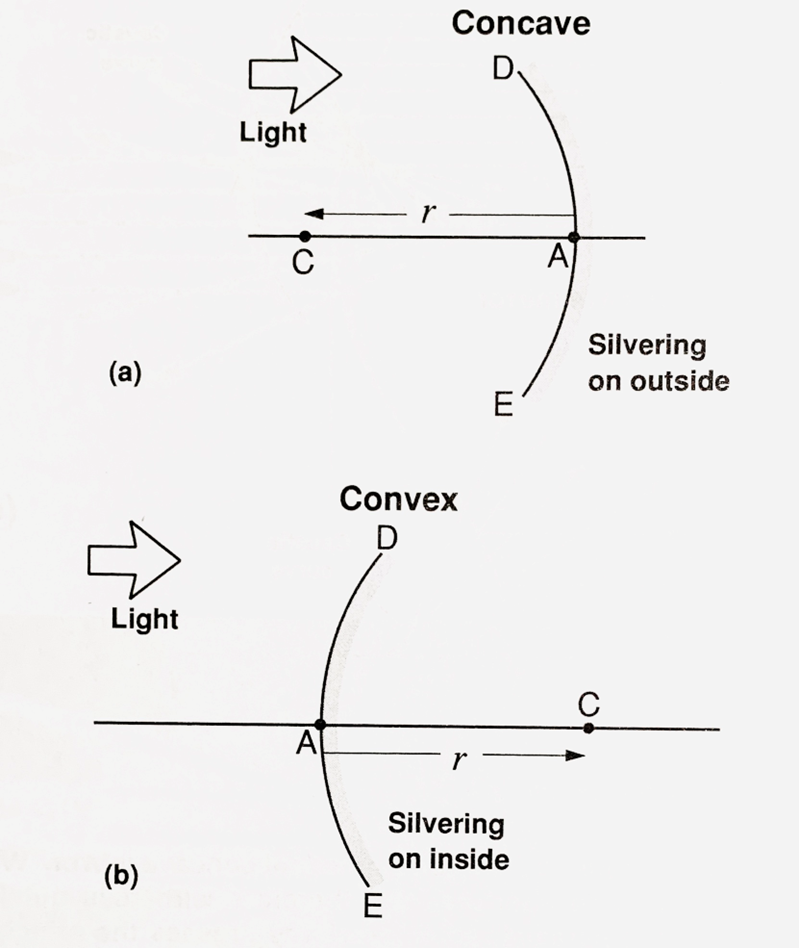
concave mirror
polished surface on the outside
convex mirror
polished surface on the inside
pole/vertex
this point (A) is the center of the of the surface/mid-point of the mirror surface
center of curvature point
this point (C) is the center of curvature of the sphere of the which the mirror forms a part
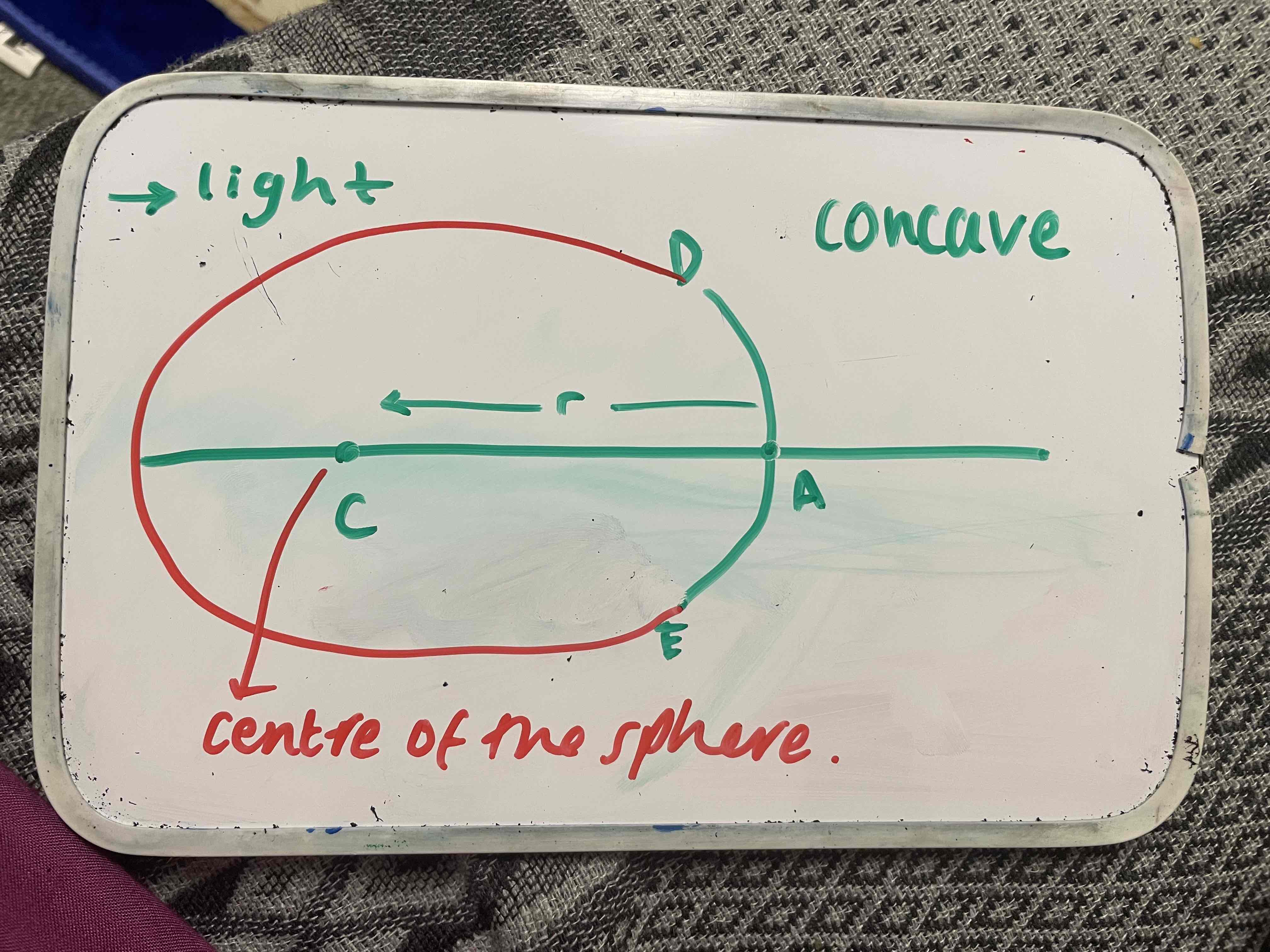
principle of axis of the mirror
this is line AC produced in both directions
what does line DE represent
the diameter or aperture of the mirror
radius of curvature
the distance between A and C is the radius of curvature of the mirror, AC = r
what is the principle focus of the mirror (F)
the point at which the reflected rays intersect: If the incident pencil of rays is limited to a narrow beam parallel to and close to the principal axis of the mirror, the reflected rays all intersect, or appear to intersect at a single point (F)
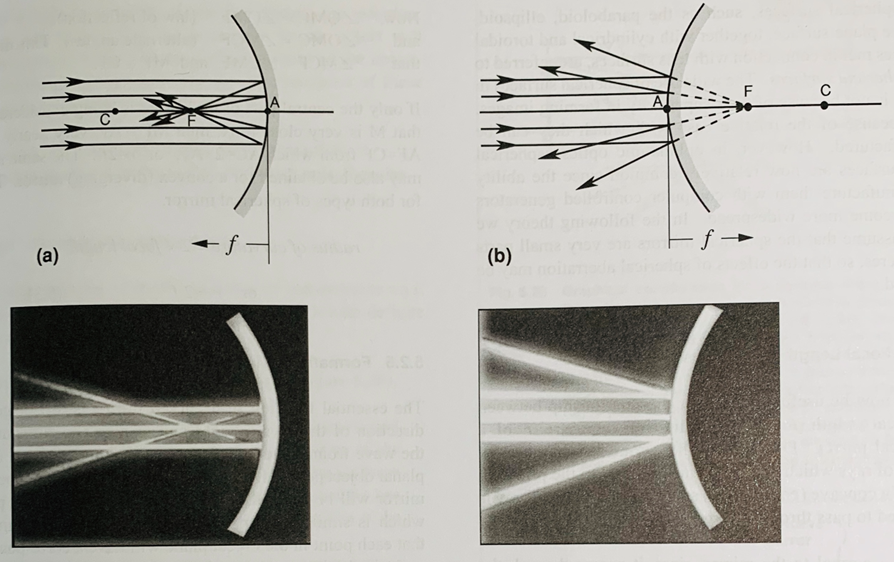
explain how point F - the principle of focus is a REAL point in a concave mirror
As the rays of light actually intersect/(converge) at this point - to prove this if we place a screen at F, a clear image of the distance object will be formed
explain how point F - the principle of focus is a VIRTUAL point in a convex mirror
As the rays only appear to diverge from it. If we place a screen at F no image will be formed
what is the distance AF
the focal length of the mirror, f